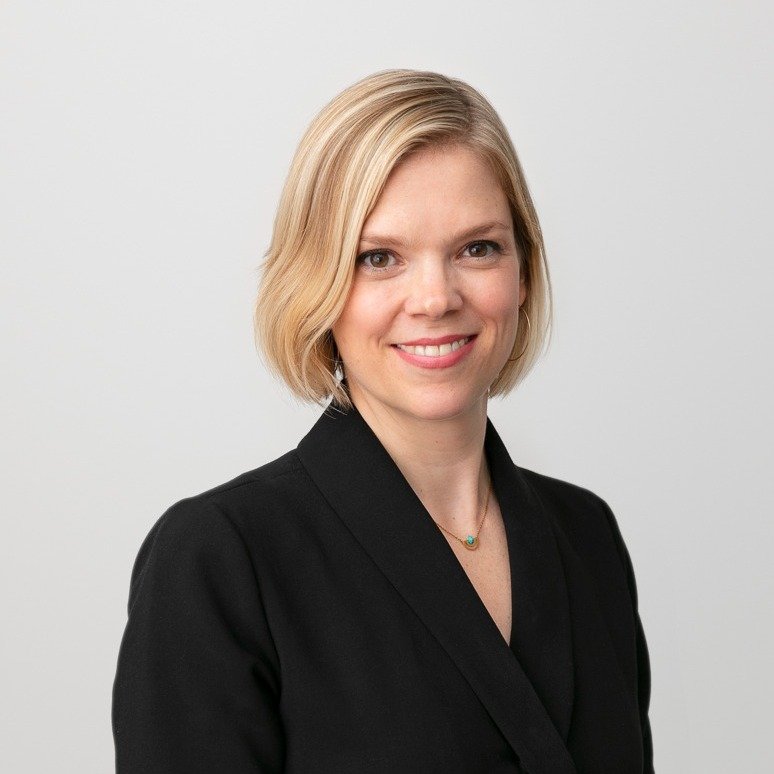Uncategorized
Finding the Right DAM AI Tools: AVP’s Human-Centered Evaluation Framework
23 March 2022
Henry Stewart DAM Webinars 2022
Watch the webinar with a searchable transcript and embedded closed captions here.
[Read more]To Build a Successful DAM Program, Adopt a Service Mindset
25 August 2021
 Kara Van Malssen is Partner and Managing Director for Services at AVP. Kara works with clients to bridge the technical, human, and business aspects of projects. Kara has supported numerous organizations with DAM selection and implementation, metadata modeling and schema development, and taxonomy development, and user experience design efforts.
Kara Van Malssen is Partner and Managing Director for Services at AVP. Kara works with clients to bridge the technical, human, and business aspects of projects. Kara has supported numerous organizations with DAM selection and implementation, metadata modeling and schema development, and taxonomy development, and user experience design efforts.
Audiovisual Metadata Platform Pilot Development (AMPPD) Final Project Report
21 March 2022
This report documents the experience and findings of the Audiovisual Metadata Platform Pilot Development (AMPPD) project, which has worked to enable more efficient generation of metadata to support discovery and use of digitized and born-digital audio and moving image collections. The AMPPD project was carried out by partners Indiana University Libraries, AVP, University of Texas at Austin, and New York Public Library between 2018-2021.
Report Authors : Jon W. Dunn, Ying Feng, Juliet L. Hardesty, Brian Wheeler, Maria Whitaker, and Thomas Whittaker, Indiana University Libraries; Shawn Averkamp, Bertram Lyons, and Amy Rudersdorf, AVP; Tanya Clement and Liz Fischer, University of Texas at Austin Department of English. The authors wish to thank Rachael Kosinski and Patrick Sovereign for formatting and editing assistance.
Funding Acknowledgement: The work described in this report was made possible by a grant from the Andrew W. Mellon Foundation.
Read the entire report here.
PROBLEM STATEMENT
Libraries and archives hold massive collections of audiovisual recordings from a diverse range of timeframes, cultures, and contexts that are of great interest across many disciplines and communities.
In recent years, increased concern over the longevity of physical audiovisual formats due to issues of
media degradation and obsolescence, 2 combined with the decreasing cost of digital storage, have led institutions to embark on projects to digitize recordings for purposes of long-term preservation and improved access. Simultaneously, the growth of born-digital audiovisual content, which struggles with its own issues of stability and imminent obsolescence, has skyrocketed and continues to grow exponentially.
In 2010, the Council on Libraries and Information Resources (CLIR) and the Library of Congress reported in “The State of Recorded Sound Preservation in the United States: A National Legacy at Risk in the Digital Age” that the complexity of preserving and accessing physical audiovisual collections goes far beyond digital reformatting. This complexity, which includes factors such as the cost to digitize the originals and manage the digital surrogates, is evidenced by the fact that large audiovisual collections are not well represented in our national and international digital platforms. The relative paucity of audiovisual content in Europeana and the Digital Public Library of America is a testament to the difficulties that the GLAM (Galleries, Libraries, Archives, and Museums) community faces in creating access to their audiovisual collections. There has always been a desire for more audiovisual content in DPLA, even as staff members recognize the challenges and complexities this kind of content poses (massive storage requirements, lack of description, etc.). And, even though Europeana has made the collection of audiovisual content a focus of their work in recent years, as of February 2021, Europeana comprises 59% images and 38% text objects, but only 1% sound objects and 2% video objects. DPLA is composed of 25% images and 54% text, with only 0.3% sound objects, and 0.6% video objects.
Another reason, beyond cost, that audiovisual recordings are not widely accessible is the lack of sufficiently granular metadata to support identification, discovery, and use, or to support informed rights determination and access control and permissions decisions on the part of collections staff and users. Unlike textual materials—for which some degree of discovery may be provided through full-text indexing—without metadata detailing the content of the dynamic files, audiovisual materials cannot be located, used, and ultimately, understood.
Traditional approaches to metadata generation for audiovisual recordings rely almost entirely on manual description performed by experts—either by writing identifying information on a piece of physical media such as a tape cassette, typing bibliographic information into a database or spreadsheet, or creating collection- or series-level finding aids. The resource requirements and the lack of scalability to transfer even this limited information to a useful digital format that supports discovery presents an intractable problem. Lack of robust description stands in the way of access, ultimately resulting in the inability to derive full value from digitized and born-digital collections of audiovisual content, which in turn can lead to lack of interest, use, and potential loss of a collection entirely to obsolescence and media degradation.
Read the entire report here.
People-Centered Media Asset Management at National Geographic Society [Webinar Recording]
28 June 2021
Understanding how content creators and Media Asset Management (MAM) users think, behave, and view the world can help create critical building blocks that translate into a powerful MAM user experience. To chart your course toward managerial success, it’s equally important to identify the goals of the MAM as well.
Our Media Asset Management consulting work with the National Geographic Society (NatGeo or NGS) illustrates how understanding the difference between the thinking, behavior, and worldview of content creators and MAM users translates to asset management of the grandest proportions.
Illuminating the World with MAM
The NGS’s primary mission is to illuminate and protect the wonder of our world. For decades their primary method for doing so was with their world-famous magazine, sharing images and written stories about the miraculous cultures, species, and wonders of our natural world.
Today, ever in tune with the modern digital age, the NGS now shares those images and stories through its website, social media platforms, and television programs.
However, this variety in publication means they need an ironclad method for managing all of their media content and assets—especially when the NGS supports between 700-800 explorers every year. And thanks to AVP’s asset management expertise and experience, the NGS MAM system can grow to support as many explorers as they need.
The NGS’s Media Asset Management system works as the bridge between those field explorers documenting what the world has to offer and the eyes and hearts of the people. With terabytes upon terabytes of assets to manage, a MAM helps NGS’s content creators sift through their database to find the materials they need to tell their stories.
Selection and Description of Assets
After exploring potential solutions to the NGS’s problems, AVP helped the NGS identify two primary concerns with their Media Asset Management system: Selection and description. These pain points were based on the experience of the content creators who use the system the most, helping us identify the correct Media Asset Management tools we needed to employ.
Selection, in this case, refers to the ability to curate digital media assets before they even make it into the MAM system. Since the NGS manages assets from hundreds of sources every year, this curation process is imperative for its ability to ensure that the assets in the MAM align with the scope of what the MAM is intended to support. This results in more effective management and ultimately a better user experience.
Description largely refers to the creation and application of metadata— information that helps users search and discover relevant assets with efficiency and quality.
These two concepts, among others, were identified and addressed through multiple AVP service offerings, helping the NGS successfully launch their MAM and meet the needs of their stakeholders that are creating, managing, and using digital media assets.
Learn from the Experts
At AVP, we practice user-centered approaches to cultivate successful MAM programs. By focusing on the user experience, AVP better ensures that whether or not we help you select your MAM, that the MAM you have serves your needs, goals, and objectives as effectively as possible.
Want the full picture of the National Geographic Society’s MAM program? In this webinar, AVP Managing Director of Consulting and MAM expert Kara Van Malssen is joined by our clients Angela Sanders and Jorge Alvarenga of National Geographic Society to share how people-centered thinking is innovating how NGS is building and managing their MAM program.
Enjoy the webinar (with searchable transcripts) in the embedded player below or hosted in the Aviary platform.
Designing a User-driven DAM Experience, Part 1
9 April 2021
To the user, a digital asset management (DAM) or similar system is only as good as the search and discovery experience.
If users are greeted with a homepage that they can’t relate to, if searches don’t return expected results, and if they can’t figure out how to use the navigational tools to browse, they get frustrated and leave. Many will never return.

DAM and similar systems exist to help people find assets they are looking for and use them effectively. Getting the search and discovery experience right is the key to adoption.
To design a system for findability, you have to start with the building blocks: metadata, taxonomy, and information architecture. To translate these into a good search and discovery experience, you have to learn how your users see the world.
[Read more]Designing a User-driven DAM Experience, Part 2
15 April 2021
Designing a User-driven DAM Experience, Part 3
15 April 2021
Manage Your DAM Expectations
8 April 2020
Or, how getting a DAMS is like buying and owning a home

AVP Tips to Manage Your DAM Expectations Video
2 July 2020
AVP DAM System Specialists Kara Van Malssen and Kerri Willette talk through tips on how to manage expectations during a DAMS launch. The tips are from a recent AVP blog post Manage Your DAM Expectations and based on Van Malssen’s white paper Scenario Planning for a Successful DAM Journey.
Digital Preservation Go!
6 May 2021
Take your first, next step to long-term digital preservation with AVP.